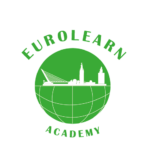Cultural Diversity and Social Integration
Overview
Instructor
WELCOME TO PHP!
This tutorial will introduce you to PHP, a server-side scripting language you can use to make dynamic websites and web applications.
WHAT YOU SHOULD ALREADY
Before you continue you should have a basic understanding of the following:
- HTML
- CSS
- JavaScript
WHAT IS PHP?
- PHP is an acronym for “PHP: Hypertext Preprocessor”
- PHP is a widely-used, open source scripting language
- PHP scripts are executed on the server
- PHP is free to download and use
 |
PHP is an amazing and popular language!It is powerful enough to be at the core of the biggest blogging system on the web (WordPress)! It is deep enough to run the largest social network (Facebook)! It is also easy enough to be a beginner’s first server side language! |
|---|
WHAT IS A PHP FILE ?
- PHP files can contain text, HTML, CSS, JavaScript, and PHP code
- PHP code are executed on the server, and the result is returned to the browser as plain HTML
- PHP files have extension “.php”
WHAT CAN PHP DO?
- PHP can generate dynamic page content
- PHP can create, open, read, write, delete, and close files on the server
- PHP can collect form data
- PHP can send and receive cookies
- PHP can add, delete, modify data in your database
- PHP can be used to control user-access
- PHP can encrypt data
With PHP you are not limited to output HTML. You can output images, PDF files, and even Flash movies. You can also output any text, such as XHTML and XML.
WHY PHP?
- PHP runs on various platforms (Windows, Linux, Unix, Mac OS X, etc.)
- PHP is compatible with almost all servers used today (Apache, IIS, etc.)
- PHP supports a wide range of databases
- PHP is free. Download it from the official PHP resource: www.php.net
- PHP is easy to learn and runs efficiently on the server side
Now it’s time to check out of this course. Have fun!
You might also be interested in
Brief description An introduction to the fundamental principles of a CLIL (Content and Language Integrated Learning) classroom and how any CLIL program depends not only on the integration of content and language but on the successful collaboration of teachers and …
Brief description The training course includes 5 days of 5 hours of instruction each, aimed at equipping teachers with tools, strategies, and skills to enhance classroom engagement through audiovisual techniques and media. Communication is fundamental for good teaching, and to …
A training program designed to equip educators with the skills and knowledge necessary to integrate environmental sustainability into their teaching practices. The course aims to raise awareness of global and local environmental issues while promoting the United Nations’ Sustainable Development Goals (SDGs) as a framework for education. Through interactive sessions, participants will explore methods for embedding sustainability into various subjects, focusing on practical applications and community impact. Participants will engage in hands-on activities, collaborative projects, and digital supplements that emphasize...
Brief description CLIL (Content and Language Integrated Learning) is a course designed to provide linguistic and practical support to primary and secondary school subject teachers in the CLIL classroom. The main aim of the course is to teach participants how …




